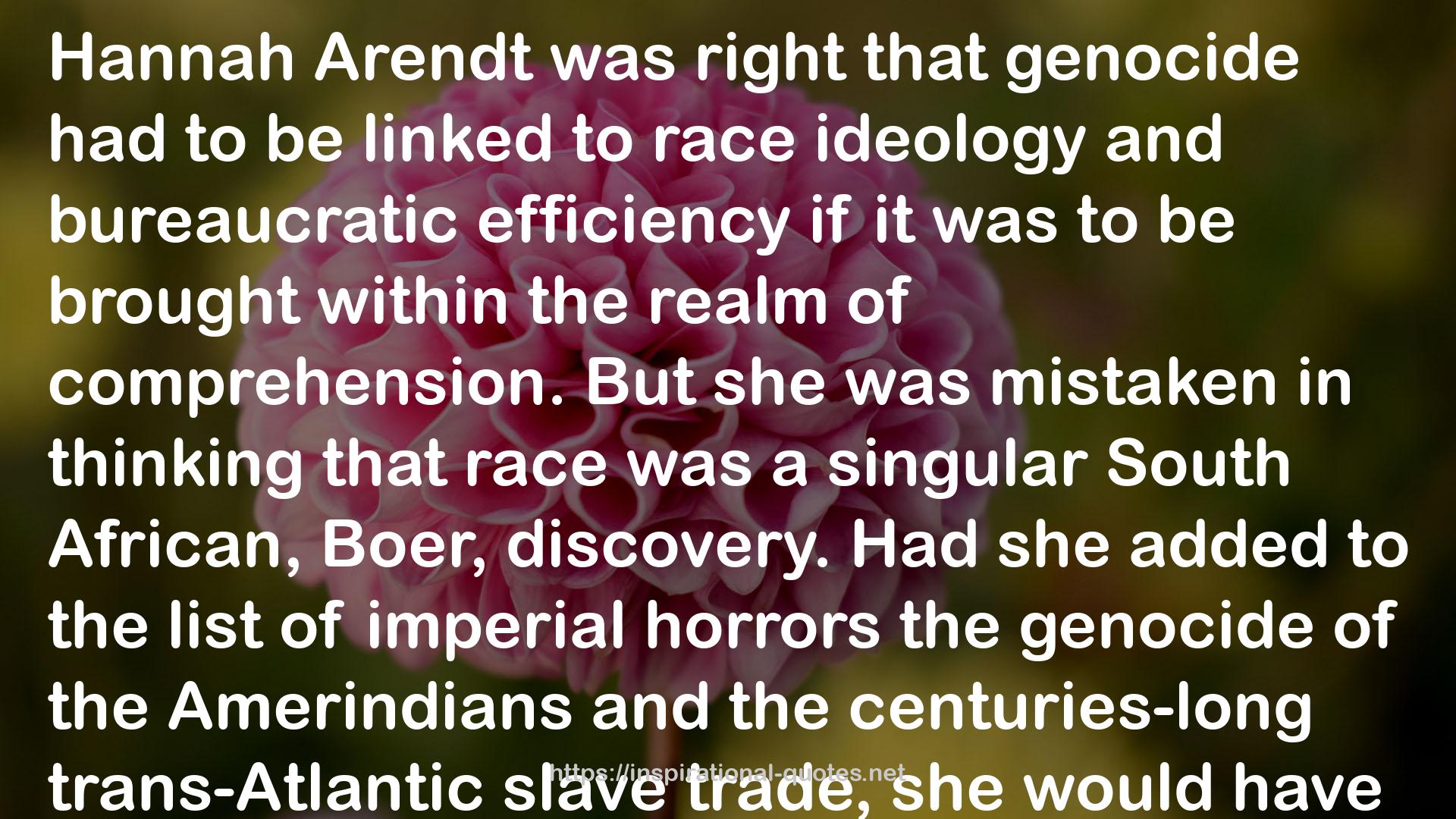" Hannah Arendt was right that genocide had to be linked to race ideology and bureaucratic efficiency if it was to be brought within the realm of comprehension. But she was mistaken in thinking that race was a singular South African, Boer, discovery. Had she added to the list of imperial horrors the genocide of the Amerindians and the centuries-long trans-Atlantic slave trade, she would have come to a different conclusion. For the nurturing ground of scientific racism was not as much the Boer experience in South Africa as the imperial encounter with continental Africa. The trans-Atlantic slave trade racialized notions of Africa. It fueled the conceptual tendency to divide Africa in two: that above the Sahara and that below it. From a bridge that had for centuries facilitated a regular flow of trading camel caravans between civilizations to its north and south, the Sahara was now seen as the opposite: a great civilizational barrier below which lay a land perpetually quarantined, “Negro Africa.” “True” Africa, “real” Africa, was now seen as identical with tropical (“sub-Saharan”) Africa geographically and Negro (“Bantu”) Africa socially. "
― , When Victims Become Killers: Colonialism, Nativism, and the Genocide in Rwanda
